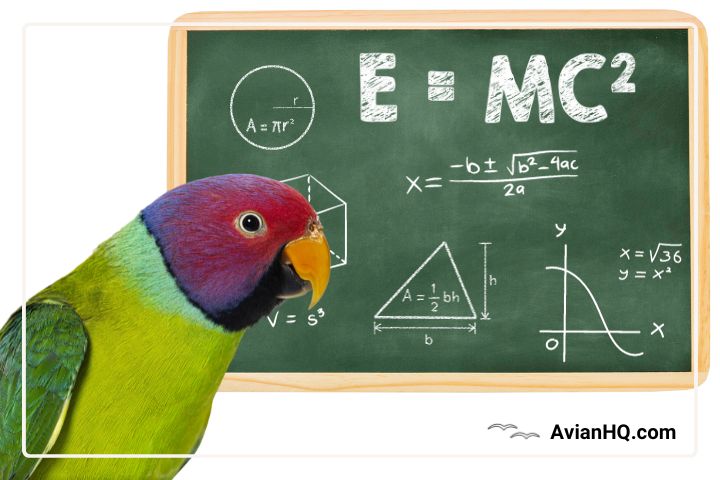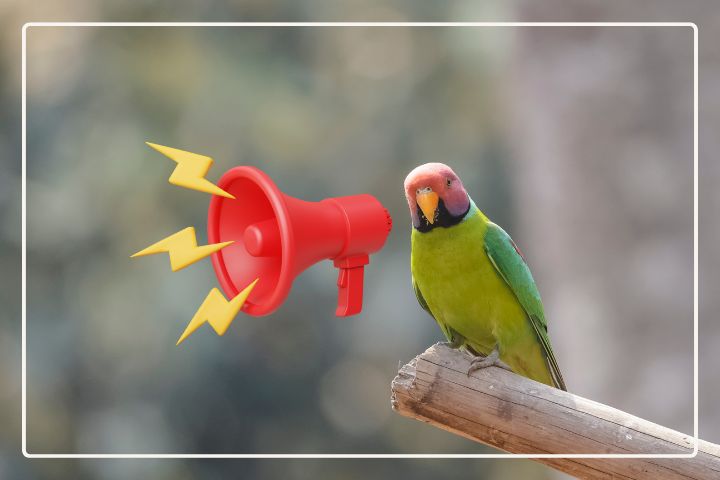Red Breasted Parakeet Baby: All You Need to Know
The red-breasted parakeet (Psittacula alexandri) also known as a moustached parakeet is a popular pet bird that is known for its striking appearance and playful personality. These birds are native to South Asia but have been introduced to other parts of the world due to their popularity as pets. Red-breasted parakeets are known for their distinctive red patches on their breasts, which make them easy to identify.
Red-breasted parakeets are social birds that thrive in groups. They are highly intelligent and can learn to mimic human speech with proper training. These birds are also known for their playful personalities and love to interact with their owners. Red-breasted parakeets are relatively easy to care for and can make great pets for those who are willing to provide them with the attention and care they need.
If you are considering getting a red-breasted parakeet as a pet, it is important to do your research and make sure that you are prepared to provide them with the proper care and attention. These birds require a spacious cage, a healthy diet, and plenty of social interaction to thrive. With the right care, a red-breasted parakeet can make a wonderful companion for many years to come.
Physical Characteristics of Red Breasted Parakeet Baby
Red Breasted Parakeet babies are born with a soft, downy covering of feathers that gradually grows in and is replaced by adult feathers. As they grow, they develop a bright green plumage with salmon-colored chests, gray-blue heads, and a black mustache. Males have a bright red upper bill, while females’ bills are wholly black.

Compared to adult Red Breasted Parakeets, the babies have a more muted coloration, with less vibrant green feathers and a lighter chest color. Their beaks are also shorter and less curved than those of adults.
Red Breasted Parakeet babies have a stocky build with a short tail and broad wings. They have a wingspan of approximately 15 inches (38 cm) and can weigh up to 4.5 ounces (130 grams) when fully grown.
Like all parrot babies, Red Breasted Parakeet babies have a large head and big eyes. Their eyes are dark and round, and they have a small patch of bare skin around their eyes that is typically white or pink in color.
Overall, Red Breasted Parakeet babies are adorable and have a distinctive appearance that sets them apart from other parrot species. As they mature, their colors become more vibrant and their features become more defined, making them a beautiful addition to any aviary or household.
| Characteristic | Description |
|---|---|
| Plumage | Bright green with salmon-colored chests, gray-blue heads, and a black mustache |
| Beak | Shorter and less curved than those of adults |
| Build | Stocky with short tail and broad wings |
| Wingspan | Approximately 15 inches (38 cm) |
| Weight | Up to 4.5 ounces (130 grams) when fully grown |
| Eyes | Dark and round, with a small patch of bare skin around their eyes that is typically white or pink in color |
Breeding Cycle of Red Breasted Parakeets
Red-breasted parakeets usually reach maturity enough to breed around one year old. The breeding cycle of these parakeets is divided into two stages: colony breeding and individual breeding. It is possible to create several pairs in a single flight to form a colony.

During the breeding season, the male parakeet will display courtship behavior such as feeding the female, preening her feathers, and performing a dance. The female will lay 2-4 eggs in a nest made of wood chips, sawdust, or other soft materials. The incubation period lasts about 22 days, during which both parents take turns sitting on the eggs.
The young birds will fledge (leave the nest) at around 6-8 weeks of age. At this time, they are still dependent on their parents for food and protection. The parents will continue to feed and care for their offspring for several more weeks until they are fully independent.
Red-breasted parakeets are known to breed year-round in their native range, but in other parts of the world, breeding may be limited to certain seasons. It is important to provide these birds with a suitable nesting box and a balanced diet to ensure successful breeding.
Caring for a Red Breasted Parrot Baby
Raising a Red Breasted Parakeet baby can be a rewarding experience. However, it requires a lot of attention and care. Here are some tips on how to care for a Red Breasted Parakeet baby.

Housing
The Red Breasted Parakeet baby should be housed in a clean and spacious cage. The cage should be large enough to allow the baby to move around freely and exercise. It should also have enough perches and toys to keep the baby entertained. The enclosure should be cleaned regularly to prevent the build-up of bacteria and other harmful organisms.
Feeding
The Red Breasted Parakeet baby should be fed a diet that is rich in nutrients. The baby should be fed a variety of foods including fruits, vegetables, and grains. The baby should also be given access to clean water at all times. It is important to monitor the baby’s weight to ensure that it is growing at a healthy rate.
Healthcare
The Red Breasted Parakeet baby should be taken to a veterinarian for regular check-ups. The veterinarian can provide advice on how to care for the baby and can also provide vaccinations and other treatments if necessary. It is important to monitor the baby’s health and behavior to ensure that it is not experiencing any health problems.
Conclusion
Raising a red-breasted parakeet baby requires patience, dedication, and a lot of attention. These birds are intelligent and social, and they need plenty of stimulation to thrive. Providing a safe and comfortable environment, a healthy diet, and regular veterinary care is essential to ensure the health and happiness of your feathered friend.
Red-breasted parakeet babies are active and playful, and they love to explore their surroundings. Owners should provide plenty of toys and perches to keep them entertained and engaged. It’s also important to spend time interacting with your bird every day, whether it’s through talking, playing, or training.
When it comes to diet, red-breasted parakeets need a balanced mix of fruits, vegetables, and high-quality pellets. Owners should avoid feeding their birds foods that are high in fat, salt, or sugar, as these can lead to health problems. Fresh water should be available at all times, and the bird’s food and water dishes should be cleaned regularly.
Overall, raising a red-breasted parakeet baby can be a rewarding experience for bird lovers who are willing to put in the time and effort. With proper care and attention, these birds can live long, healthy, and happy lives as beloved members of the family.








Very interesting details you have remarked, thankyou for putting up.